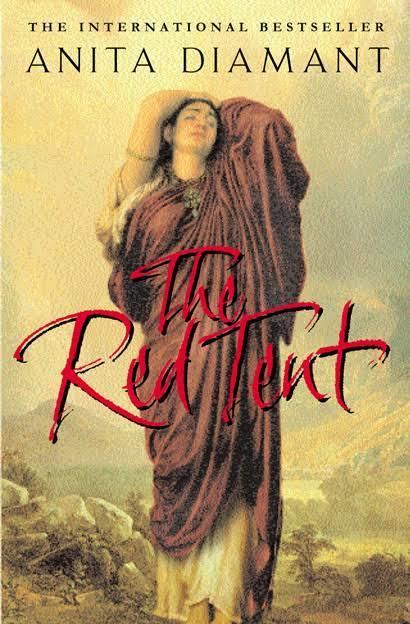8.4 /10 1 Votes
Language English ISBN 0-312-35376-6 Country United States of America | 4.2/5 Goodreads Publication date October, 1997 Originally published 15 September 1997 Genre Historical Fiction | |||||||||||||||||||||||||||||||||
 | ||||||||||||||||||||||||||||||||||
Publisher A Wyatt Book for St. Martin's Press Media type Print (hardcover, paperback) Pages 321 p. (hardcover edition) Characters Jacob, Dinah, Leah, Zilpah, Rachel Awards Book Sense Book of the Year Award for Adult Fiction Similar Anita Diamant books, Feminism books, Historical Fiction books | ||||||||||||||||||||||||||||||||||
The red tent author anita diamant with aaron katersky
The Red Tent is a novel by Anita Diamant, published in 1997 by Wyatt Books for St. Martin's Press. It is a first-person narrative that tells the story of Dinah, daughter of Jacob and sister of Joseph. She is a minor character in the Bible, but the author has broadened her story. The book's title refers to the tent in which women of Jacob's tribe must, according to the ancient law, take refuge while menstruating or giving birth, and in which they find mutual support and encouragement from their mothers, sisters and aunts.
Contents
- The red tent author anita diamant with aaron katersky
- Plot summary
- Reception
- Historicity
- Adaptations
- References
Plot summary
Dinah opens the story by recounting for readers the union of her mother Leah and father Jacob, as well as the expansion of the family to include Leah's sister Rachel, and the handmaids Zilpah and Bilhah. Leah is depicted as capable but testy, Rachel as something of a belle, but kind and creative, Zilpah as eccentric and spiritual, and Bilhah as the gentle and quiet one of the quartet.
Dinah remembers sitting in the red tent with her mother and aunts, gossiping about local events and taking care of domestic duties between visits to Jacob, the family's patriarch. A number of other characters not seen in the biblical account appear here, including Laban's second wife Ruti and her feckless sons.
According to the Bible's account in Genesis 34, Dinah was "defiled" by a prince of Shechem, although he is described as being genuinely in love with Dinah. He also offers a bride price fit for royalty. Displeased at how the prince treated their sister, her brothers Shimeon (spelled "Simon" in the book) and Levi treacherously tell the Shechemites that all will be forgiven if the prince and his men undergo the Jewish rite of circumcision (brit milah) so as to unite the people of Hamor, king of Shechem, with the tribe of Jacob. The Shechemites agree, and shortly after they go under the knife, while incapacitated by pain, they are murdered by Dinah's brothers and their male servants, who then return with Dinah.
In The Red Tent, Dinah genuinely loves the prince and willingly becomes his bride. She is horrified and grief-stricken by her brothers' murderous rampage. After cursing her brothers and father she escapes to Egypt, where she gives birth to a son. In time she finds another love and reconciles with her brother Joseph, who is now vizier of Egypt. At the death of Jacob, she visits her estranged family. She learns she has been all but forgotten by her other living brothers and father but that her story lives on with the women of Jacob's tribe.
Reception
The book was a New York Times bestseller and book club discussion guides for it have been published. According to the Los Angeles Times review, "By giving a voice to Dinah, one of the silent female characters in Genesis, the novel has struck a chord with women who may have felt left out of biblical history. It celebrates mothers and daughters and the mysteries of the life cycle." The Christian Science Monitor wrote that the novel "vividly conjures up the ancient world of caravans, shepherds, farmers, midwives, slaves, and artisans...Diamant is a compelling narrator of a tale that has timeless resonance."
Historicity
Monthly menstruation for decades on end is not the historical norm. Women in prehistoric times, as estimated by research among contemporary hunter-gathered populations, probably had far fewer periods (about 160 ovulations over their lifetime) than modern women. Women of pre-industrial societies experience later menarche (around 16 years of age), earlier first births (19.5 years), frequent pregnancies (on average six live births), and long periods of breastfeeding between pregnancies, with births at intervals of 3 years. By contrast, the modern woman living in an industrialized country begins menstruating earlier (on average 12.5 years of age for American girls), first live birth later (24 years), has fewer pregnancies (two or three), scarcely breastfeeds (3 months per birth, with half of American infants never breastfed at all), and undergoes menopause later. She can expect about 450 periods in her life.
Diamant acknowledges that there is no evidence that ancient Israel used a menstrual tent for retreat, although she describes it as a common feature in other pre-modern cultures, as well as some modern cultures.
Adaptations
Lifetime adapted the novel into a two-part miniseries, which premiered December 7 and 8, 2014. Dinah is portrayed by Rebecca Ferguson. Leah is portrayed by Minnie Driver, and Rachel by Morena Baccarin.
